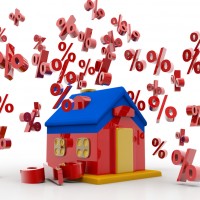
The Rightmove weekly tracker data found that the average five-year fixed rate was 4.66 per cent, as of yesterday, which was lower than a year ago when it was 4.81 per cent.
The lowest available mortgage rates according to Rightmove’s analysis were 3.88 per cent for a five-year fixed deal at 60 per cent loan to value (LTV) or 4.17 per cent for a two-year fix.
The average rates at this tier were 4.15 per cent and 4.43 per cent respectively.
At 75 per cent LTV, the average rates came to 4.78 per cent for a two-year fix and 4.55 per cent for a five-year fix.
Respectively, average pricing was 4.98 per cent and 4.61 per cent at 85 per cent LTV.
Sub-five per cent mortgage rates were also available for borrowers with a smaller deposit, as the average came to 4.82 per cent for a five-year fix at 90 per cent LTV. This rose to 5.25 per cent for a two-year fix.
At 95 per cent LTV, average mortgage rates reached 5.64 per cent for a two-year fix and 5.23 per cent for a five-year fix.
Falling mortgage payments
Rightmove also calculated that the average mortgage payment for a typical first-time buyer had also fallen.
As of yesterday, this came to £1,063 a month on a 85 per cent LTV mortgage of 25 years for a property worth £222,473, compared to £1,086 a year ago.
Matt Smith, Rightmove’s mortgage expert said: “We’ve had the busiest month for people getting a mortgage in principle since we launched the service in 2022, which shows that many future movers want to understand what they are likely to be able to borrow from a lender if taking out a mortgage soon.
“Average mortgage rates continue to trickle down on the whole, however we’re now seeing those with smaller deposits benefit the most, whereas those who need to borrow less have seen some small increases in rates due swap rate trends.”

















